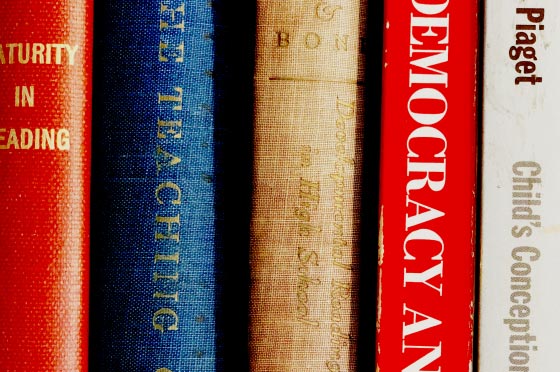1.1 Looking back: some social and scientific foundations
The first section begins with a look back over the last 150 years to some key antecedents, especially the influence of psychological studies of reading and the connections to German psychologist Wilhelm Wundt and William James in the US who mentored some of west’s leading reading scholars. You will be introduced to Edmund Huey who wrote the first textbook focused on Reading Research and the authors of the first reading tests. Plus, you will be alerted to the dominant influence of behaviourism and measurement that persists somewhat today. The depiction of the enculturated reader attempts to capture an imagined reader befitting the emphases during this period.

Enculturated Reader
How we engage with text and how we are taught to respond to text is not insignificant. Historically, our engagement with reading and writing have been embedded in social systems, with affordances that represent forms of enculturation. Enculturation may be self-determined or, alternatively, imposed or mandated by the institutions that guide and govern us. In today’s societies, our engagements with text involve a constant barrage of material. While some of this material is self-initiated or explored, the rest is directed at us via the platforms of the institutions within which we allow ourselves to be embedded as we increasingly tether ourselves to the media. As shown in the recent elections in various countries, inadvertent or planned forms of enculturation may occur via web-based and social media platforms. The forms may range from marketing to attempts to frame, construe (or misconstrue), or somehow influence the behaviour, cultural beliefs, and behaviour of users, readers, and viewers operating within these digital realms.
The Foundational Years of Reading
Reading is anchored in a formative history that dates back to the advent of symbolic representation dating back over 4,000 years—used as a vehicle for records and the pursuit of negotiations, through print and its antecedents such as tokens used for trade and ceremony (a practice that goes back perhaps over 150,000 years). The significance of these systems (as records of negotiations, artistic expressions, everyday practices, historical events, and spiritual guidance) is evidenced by documentation of the philosophic debates and literary works of antiquity, the creation of the first libraries (e.g., Alexandria, 300 B.C.), and eventually the first universities (e.g., University of Bologna, 1088 A.D., and the University of Timbuktu, circa 1100 A.D.). Print itself became the vehicle for inscribing rituals and laws, designating rights of ownership, liberties, and citizenship. At the same time, the notion of reading texts became an object of study among prominent philosophers, who debated whether texts were tools of subjugation or liberation. For instance, as captured in Plato’s Meno, Socrates related his concern for displacement of a dialectic with written text. Philosophers thus debated the merits of oral and written renditions and intended meanings among scholars, priests, and their disciples.
Accompanying Videos
Tierney-Pearson Conversion Series
Rob Tierney and P. David Pearson have a conversation about the issues on this topic.
